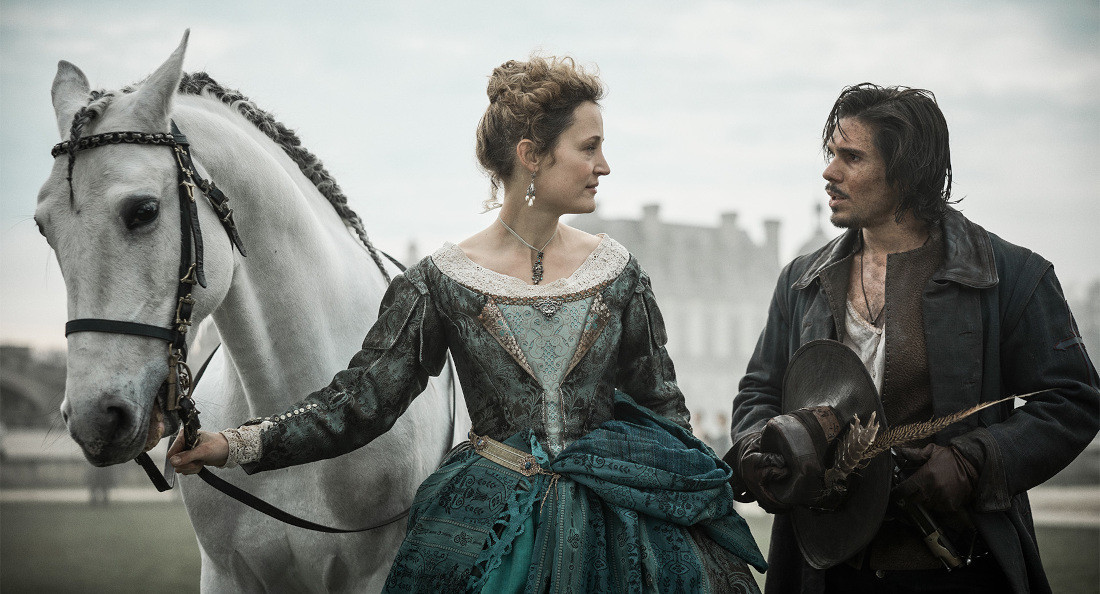Critipeg: The Three Musketeers: Milady
★★★½ out of five
Every generation gets its Three Musketeers movie. The classic 1844 swashbuckling Alexandre Dumas novel has been adapted dozens of times for the big screen, with each often exemplifying the cinematic trends of their era.
Disney’s 1993 version starring Chris O’Donnell as D’Artagnan was done in the style of Robin Hood: Prince of Thieves (complete with a Bryan Adams power ballad over the end credits). The 2011 version with Logan Lerman’s D’Artagnan aped Pirates of the Caribbean, awash in bad CGI. The newest adaptation of Dumas’ 19th-century telling of a 17th-century story, from director Martin Bourboulon, is a very 21st-century movie, mostly for better and occasionally for worse.
Bourboulon gives Musketeers the Dune treatment and splits it into two parts. Milady is the second. The first, D’Artagnan, is helpfully recapped in the opening minutes of Milady, but anyone interested in part two would do well to watch part one. (It’s currently rentable online for $1.99.)
This is the first French big-screen Musketeers in more than 60 years. It’s shot in France, often in real period locations, giving it a depth and authenticity far beyond 2011’s greenscreen travesty or 1993’s theme-park stunt-show touch.
If there’s a modern-day film style that this is drawing on, it’s probably the Dark Knight trilogy. Bourboulon takes a grounded approach to the material, shooting most action scenes in long, continuous handheld takes, often following his heroes through the full geography of the spaces they inhabit. He uses great fight choreography to convey the chaos of combat without ever resorting to lazy shaky-cam confusion.
One way the Dark Knight-style approach falters is in the colour palette. Bourboulon gives in to the 21st-century tendency to film anything set before 1900 in drab, desaturated browns and greys. The signature blue cassocks of the Musketeers aren’t present here, and the flamboyant fashion of 17th-century France is disappointingly muted. Fortunately, Milady has more visual pop than D’Artagnan, with many of its scenes filmed outdoors under clear, sunny skies.
The cast give excellent performances across the board, even if some of the actors are significantly aged up. Vincent Cassel is a fantastic and brooding Athos, but, at 57, he was the right age for this part 20 years ago. François Civil is closer to the right age for Athos, but here he plays D’Artagnan, written by Dumas as a naive babyface. A mid- 30s D’Artagnan comes across less as an inexperienced youth than as being a bit thick.
But still, it all works, particularly with the great supporting players. Louis Garrel and Vicky Krieps bring extra dimension to King Louis XIII and Queen Anne, even if they have less to do in Milady than in D’Artagnan.
Eric Ruf’s turn as Cardinal Richelieu is refreshing, a believable backroom schemer, especially compared to previous takes by Tim Curry and Christoph Waltz, whose respective mustaches were so enthusiastically twirled, it’s impossible to believe they weren’t outed as villains immediately.
Perhaps best of all is Eva Green as the title Milady de Winter. It’s a bit of casting so obviously perfect that it could border on self-parody if Green wasn’t so damn good.
Published in Volume 78, Number 23 of The Uniter (March 28, 2024)






